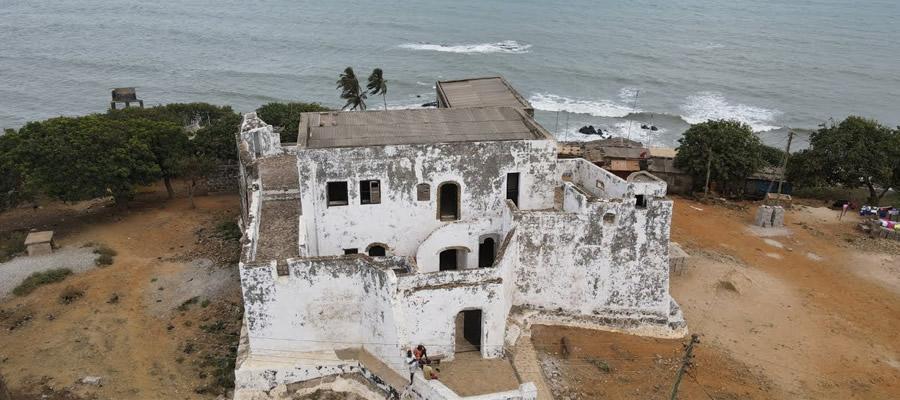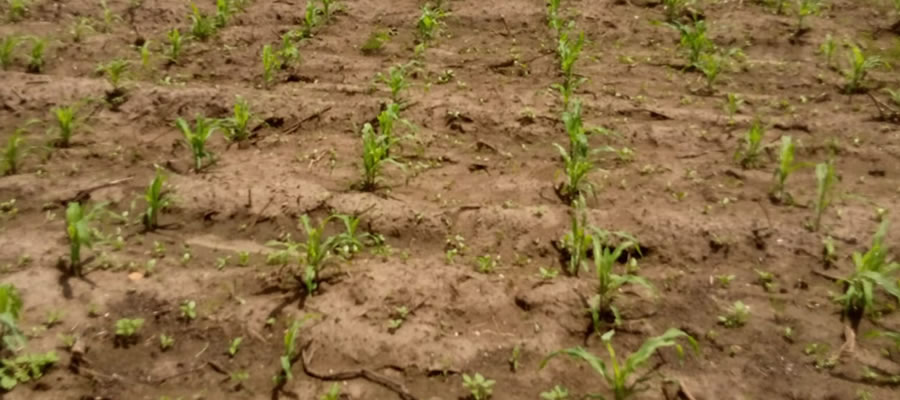

Population Size and Growth Rates
The 2000 Population and Housing Census recorded 194,792 as the population of the district, representing an inter-census increase of 44.6% as indicated in table 1.1. The district population is about 12.2% of the regional population.The population growth rate is estimated as 2.4%. Based on this growth rate, the population of the district in 2006 is estimated at 224,990. A significant characteristic of the district population is high rate of emigration of the Gomoas. The "Gomoa Two Weeks" - A two week-return home of Gomoa migrants from other areas in Ghana to have family re-unions and attend festivals attest to permanent migrant nature of the Gomoas.
It is observed that the migration trend is heaviest towards the cocoa growing areas of other districts and regions. The "Gomoa Two Weeks" could be utilized by the people, the traditional authorities and the DA for development oriented activities in the district. One main concern of the district is to attract the able-bodied migrants back through employment and investment avenues.
Age-Sex Structure
The age-sex composition of the population is of much importance in the planning process. It affords the opportunity to know the proportion of females to males with their respective ages to ascertain which segments of the ages and sexes need much attention and the proportion that has the ability or potential to facilitate the implementation of development plans and projects. Table 1.2 shows a greater male-female split over the years for the Gomoa West District compared with that of the region and the nation. Over the years the female population has been higher than the male population at all levels.
The above ratio figures of 46.4:53.4 and 45.4:54.6 respectively in 1984 and 2000 shows that in 1984 for example for every 100 males there was a corresponding 115 females and in 2000 for every 100 males there are 120.3 females. The same proportions are expected in 2006 since the estimated population of the district for 2006 is based on demographic characteristics of the district in the year 2000. Though the situation could be likened to the national situation, the huge difference could be explained by the fact that more males than females migrate in the district.
About 37.6% of the populations are within the 0.14 age group as compared to 43.7% and 41.4% for the region and national respectively. The old age (60+ years) for the Gomoa District is slightly lower than for the regional and national levels. This is indicative of low life expectancy and the level of poverty in the district compared to the regional and national situation. Nevertheless, the normal situation is tapering of the pyramid at the top. In this regard, there is the need to institute old-age programmes such as social security, pension, leisure and welfare programmes.
Population Density
Over the years, the Gomoa West District has higher population density than the region and the nation. The population density of the district increased from 100.5 persons per km2 in 1960 to 191 persons per km2 in 2000. This figure is high when compared to 169 persons per km2 for Central Region and 77 persons per km2 for the nation. The high population density could be attributed to the high birth rate among the female population. This calls for the need to increase facilities and to introduce appropriate technology to avert subsequent pressure on the available resources.
Labour Force and Dependency Ratio
The potential labour force connotes people between the age group of 15-64 years who normally form the active population. It is very necessary for a district to have desired labour force to pursue viable economic activities for development. The size of labour force determines the proportion of the age dependency. Thus a high potential labour force would imply low age dependency ratio. The Gomoa West District has a potential force of 59.1% compared to the national figure of 53.3% and regional figure of 51.2%.
Dependency is of two types namely age dependency and economic dependency. The age and economic dependency of the district are 1:0.71 and 1:1.15 respectively compared with the regional figure of 1:0.83 and 1:1.22 and national figure of 1:0.87 and 1:1.31 respectively. The economic dependency of 1:1.15 means that one worker within the labour force has more than one person to cater for and this is a characteristic of developing countries and rural economies.
The figures in pdf file below suggest that, in terms of age dependency, the district has fewer burdens than the region and the nation whereas for the economic dependency ratio the district has a high figure. The district has a higher potential labour force but lower employment levels than the region. There is therefore, the need for a critical look at the economic activities in the district to prevent lower standard of living.In this vein, the National Youth Employment Programme (NYEP) needs to be vigorously pursued to create jobs for the teeming unemployed youth in the district and also to stem the out migration of people from the district due to the seasonal nature of economic activities.
Household Size and its Distribution
The average household size for the district in 1984 was 6.8; it is now estimated to be 4.42. This suggests that there has been a drastic reduction in the birth rate. It also suggests less pressure on households as they can make more savings for investment, all things being equal. The district figure compares favourably with the national figure of 5.24 persons. The household size varies greatly within the district, with the lowest being 3.7 at Gomoa Aboso and highest being 6.1 at Buduburam. Large household sizes often impose great burdens on the household heads unless a large proportion of the household members are working.
Again, the 2000 Population and Housing Census revealed that females head most of the households in Gomoa. This trend may also account for the high level of poverty in the district since most of these women do not have men to support them. It is therefore very heartening that the government has instituted programmes to support women and the youth. These include the recently launched small and micro loans scheme and National Youth Employment Programme.
Rural/Urban Split
The number of towns in the region and district has been increasing over the years. The region had 19 urban centres in 1960, 21 in 1970, 25 in 1984 and 39 in 2000. The district had two urban centres between 1960 and 1970 but has four in 2000. There has been a significant change in the rural-urban split of the district population. The rural-urban split was 83.17 in 1984 and declined to 74.26 in 2000. These figures suggest that about 74% of the district population live in the rural areas. The situation does not present the district as good candidate for the provision of basic and/or higher order services because most of these services require threshold populations which the communities do not have. The district has an average urbanization rate of 3.22% compared to the national average rate of 2.16%. This is as a result of urbanization process in developing countries.
Spatial Analysis
The distribution of various services in the district is summarized in the scalogram provided below: The analysis of the functionality of the settlement revealed that Apam and Buduburam are the first order settlements, followed by Dawurampong, Ankamu and Nyanyano as the second order settlements. The first order settlements have most of the essential social and economic facilities however, the facilities are inadequate to serve the high population figures. The second order settlements also lacked potable water and health facilities. Refer to scalogramuser’s Calendar below.
Settlement Pattern
According to the 2000 Population and Housing Census, only four (4) out of 197 settlements namely, Buduburam, Apam, Mumford and Nyanyano have population over 5,000 persons and are thus classified as urban areas. In 1984, only Apam, Nyanyano and Mumford had populations greater than 5,000. Buduburam is the only urban community in the district, which is located along the major trunk road (i.e. Accra-Cape Coast-Takoradi road). The other urban towns are found along the coast with fishing as main economic activity. According to table 1.3 below, twelve settlements (6.1%) have populations between 2,000 and 4,999 persons while 91.9% of the settlements are rural communities with less than 2,000 people. Most of the settlements are accessible by roads.
Erosion has been the major problem in the built environment. This is due to the absence of drains along the roads and in the settlements. Most of the houses or buildings have exposed foundations. The most affected communities include Apam, Fetteh, Dago, Nyanyano and Mumford. Another emerging serious problem threatening the health situation in all the major communities such as Apam, Buduburam, Nyanyano and Dawurampong is solid waste disposal. Most of the communities do not have a refuse site and a final waste disposal site. The situation in Apam and Buduburam can be described as critical since they are the two most populous towns in the district. Most inhabitants do not have toilet facilities and tend to defecate in the bush, on the beaches and on refuse dumps.
Statistics available indicates that only 9, (4.6%) settlements have residents using water closet, 5 settlements (2.5%) have the vault chamber, and 40 (20.3%) settlements have the KVIP toilets. The Gomoa District Assembly, in collaboration with the European Union (EU), Plan International and Government of Ghana (under the HIPC Initiative), is doing every thing possible to address the situation. Positive attempts have been made to construct vault chambers at Apam, Ankamu, Enyeme and Benso. However, with the completion of the Winneba Water Head Works and the extension of water to Apam and its environs, more emphasis will be placed on encouraging people to build their own household toilet facilities.
The district has about 22,894 residential houses. However, because of the low income levels, about 72 percent of the houses are built with landcrete or mud and roofed with either aluminium or iron sheets. Poor drains, unkempt surroundings, exposed foundations, leaking roofs and dilapidated walls, characterize the housing environment. Currently, under the Land and Water Management Programme, communities are being sensitized to grow grasses around their buildings so as to prevent erosion. The room occupancy ratio of one room to 1.6 persons is far below the national figure of one room to 2.5 persons. Emigration may account for the low room occupancy ratio of the district. Most of the houses lack facilities such as water, electricity, kitchen and toilet.
Date Created : 11/20/2017 5:04:06 AM











 facebook
facebook
 twitter
twitter
 Youtube
Youtube
 +233 593 831 280
+233 593 831 280 0800 430 430
0800 430 430 GPS: GE-231-4383
GPS: GE-231-4383 info@ghanadistricts.com
info@ghanadistricts.com Box GP1044, Accra, Ghana
Box GP1044, Accra, Ghana